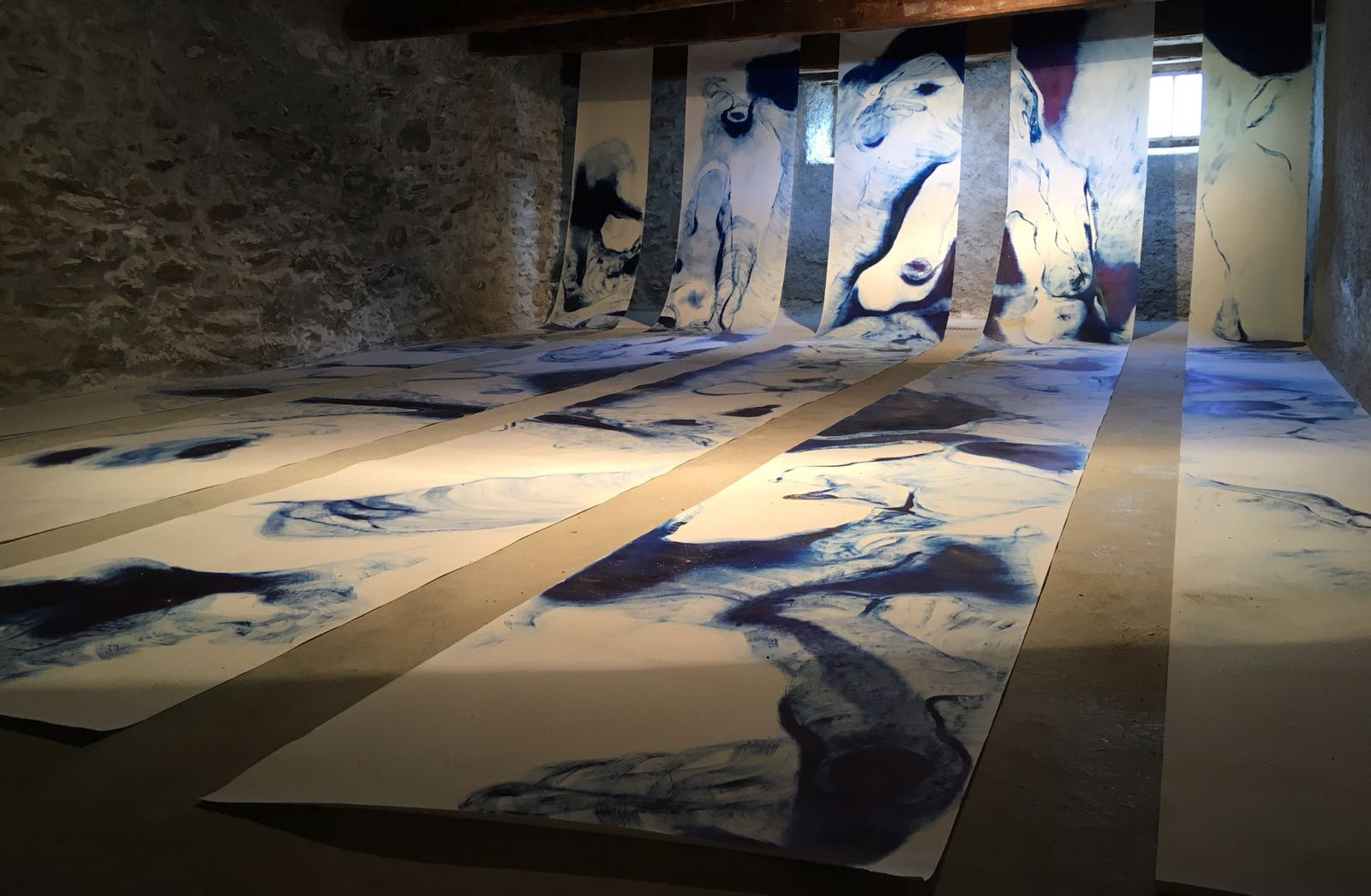Opening: Friday 27 July, 3pm
28 July - 7 September 2018
Proyecto AMIL
Tschlin, Switzerland
To gain access to the exhibition, please go to the Restaurant Macún at Bügliet 49, Tschlin.
Proyecto AMIL is pleased to announce T, a solo exhibition by the Peruvian artist Sandra Salazar that coincides with her residency at Proyecto AMIL in Tschlin, Switzerland. The exhibition is fundamentally composed of two sets of artworks: the sculptural project Genitales, produced in Lima between 2016 and 2017, and Urano and Territorio de desplazamiento created this year during her residency.
With this exhibition in Switzerland, Salazar expands her project Paisaje masculino, developed as part of the Collaborative Laboratory of Contemporary Art Haciendo Contexto II organized by Proyecto AMIL in February 2018. Salazar’s work is an exploration of the transgender body and the possibilities of synthetic modification related to the consumption of testosterone. Salazar decomposes the normative signs of sexual difference, making the masculine and the feminine coexist in an exercise to feed herself with images of recognition and affective identification. The title T refers to the use of testosterone but also to the possibilities of transition associated with technology.
The writer and curator Miguel A. López describes the works of Salazar exhibited in Tschlin as follows:
Urano Irradiating the Mountain
Since 2016, Sandra Salazar has produced an extensive repertoire of bodies through different media, such as: drawings, large-format paintings, ceramics and installations. Her works documents the sensations and personal images that afterwards she delicately transfers to paper or clay. In these works, the artist seems to want to disassemble the flesh, the bones, the organs and their systems (reproductive, respiratory, locomotor, excretory), the hormones and their metabolism, the fluids, the nervous fibers and their intricate apparatus of electrical communication and chemistry. The result is a series of landscapes and objects that undo the marks of sexual difference, colliding the systems of signs that organize the normative regime of masculine and feminine.
But if we see in her images a mere play of forms around the human figure is necessary to look again. Salazar does not offer us an anatomy atlas or the representation of a passive body ready for clinical or psychiatric inspection. Quite the opposite: her work circles around what can not be absorbed by the gaze of medical discourse, questioning the legal frameworks that seek to define which bodies are suitable for public space and intimacy. The pictorial and tactile geographies -body and space- that Salazar rehearses are questions about the relationship between visibility and autonomy, between visual epistemology and the struggles for self-determination, between the devices that construct us as sexual bodies and the opportunity to create symbols for affective recognition and self-identification.
Her is an exercise that, to some extent, is related to the work artists and activists who have operated as critical geographers of the production of sexuality; such as Carol Rama, Eva Hesse, Phia Ménard, Annie Sprinkle, Bob Flanagan, Renate Lorenz and Pauline Boudry, Lorenza Böttner or Sergio Zevallos. Salazar observes how the iconography of sexual anatomy - infused into biology classes and verified in the rituality of medical care - is not merely descriptive but performative and artefactual: it produces the subjectivities of bodies, impacts on us as if it was a planet being hit by the comet of identities. But any collision leaves fragments and cracks from where to obstruct or revert the conventional processes of social identification. Salazar works meticulously with these materials: she cuts and fits limbs, holes, ducts, liquids and organs that invoke another visual genealogy for the human and its possibilities.
The title of the exhibition, T, suggests a vocabulary of proliferation and displacement: transition, territory, technology, time, transaction, testosterone. Her efforts to represent make visible how the experience of living as a transgender body is crossed by the accelerated logics of capitalism and the institutional architecture of identity discipline (the school, the hospital, the military service, the church, the court, the family, the document of identity, the public bath, among others), all intensified in a country like Peru marked by the persistence of colonial history. In this context, for Salazar, the act of creating emerges as an opportunity to reprogram her surroundings and her subjectivity.
T is fundamentally composed of two sets of artworks: the sculptural project Genitales (2016-2017) produced in Lima and Urano and Territorio de desplazamiento (2018) produced throughout her residency in Tschlin. Genitales is a series of ceramics that invert the functions and appearance of the reproductive organs. Salazar seems to propose new and better variations for the anatomical development and the functioning of the body. The non-binary genitality of the sculptures bifurcates between representations of bone structures and of the endocrine system, composing combinations for which there is still no name: open ovules, double penises, ovaries that become testicles, a glans that resembles the shape of a vulva. This alternative genital morphology invites us to think about the syntax of gender and the universe of variants that open up from the experience of the trans body.
This alternative genital morphology invites us to rethink the visual syntax of gender and the universe of alternatives that open up from the experience of the trans body. On the one hand, Salazar explores the impact of hormones on bodies and how their control by the medical and pharmaceutical industry has been - and continues to be - one of the most sophisticated forms of regulation of the social body and the imposition of regulations on ways of living sexuality. And on the other, the artist deliberates on the uncertainties of undergoing surgically transition and the intervention processes associated with it: hysterectomy (removal of the uterus), phalloplasty (reconstruction of the penis and testicles), among others. Her work, however, function as a space for reconciliation. The delicacy of the sculptures, the traces of their malleability and the beauty of their ending seem to seek to repair the violence with which the experience of sexual identity has been implanted in our lives.
Her two recent works, Urano and Territorio de desplazamiento, distance themselves from the more explicit body representation. Urano is an abstract drawing in cyan color, the circular shape and chromatic intensity calls to mind a wide repertoire of connotations: a threshold, the open flesh, an orifice, an explosion, sidereal time, a cell, a planet, a conduit. The artist transfigures the body into a spectrum rid of anatomical, hormonal or genetic characteristics, representing it as expanding energy whose movement is impossible to follow or measure.
Territorio de desplazamiento is another form of landscape made of long strips of paper, divided and placed from the ceiling to the floor. This work, irradiated symbolically by the flashes of Urano, acts like a seismograph of sensations of a body transformed into an organic fluid of blue pigment across the paper through the space. The scale of the installation seems to play with the heroic dimensions of the masculine body but removes its marks of authority: the body of this installation has no center or hierarchy and invites us to imagine another economy of desire.
The last of the artworks consists in a projection of the Piz Lad mountain -located in front of the residency house in Tschlin- escorted by an installation of drawings. The image appears as an analogy between the exterior and the interior, between the body geography and the botanical topography. For the artist it is about an equivalence on presence: just as Piz Lad appears duplicated, the drawings and the body offer a reversible and complementary experience of oneself. Her work is clearly an answer to this present time, to a contemporaneity where the T is opening new forms of choice and fulfilment, be it in legal spaces or in clandestinity.
Miguel A. López
San José, julio de 2018
About the artist
Sandra Salazar (1989) is currently in the fourth year of a painting career at the Escuela Nacional Superior Autónoma de Bellas Artes del Perú (National Superior Autonomous School of Fine Arts of Peru). She has been researching gender issues since the beginning of her career and her current focus is the deconstruction of femininity and the construction of masculinity, from the use in this context of technological artefacts and the consumption of testosterone.
Proyecto AMIL
Bügliet 49
Tschlin, Switzerland
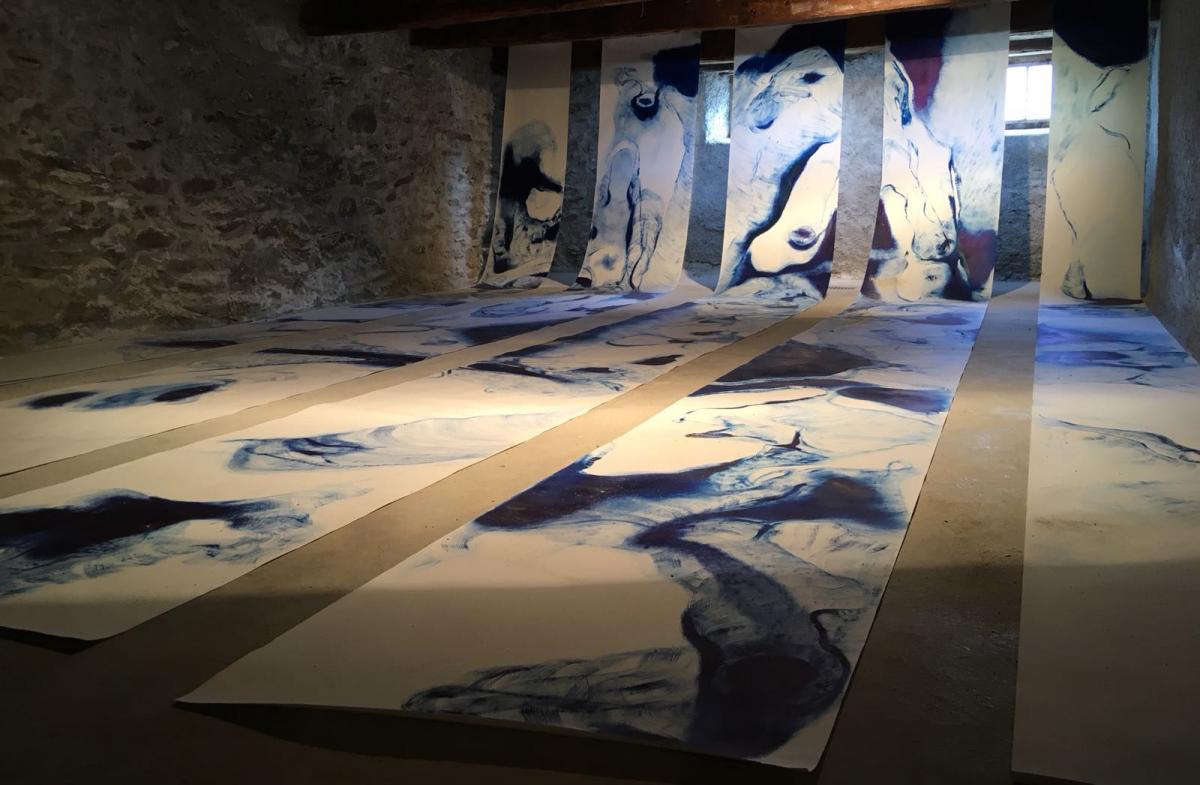
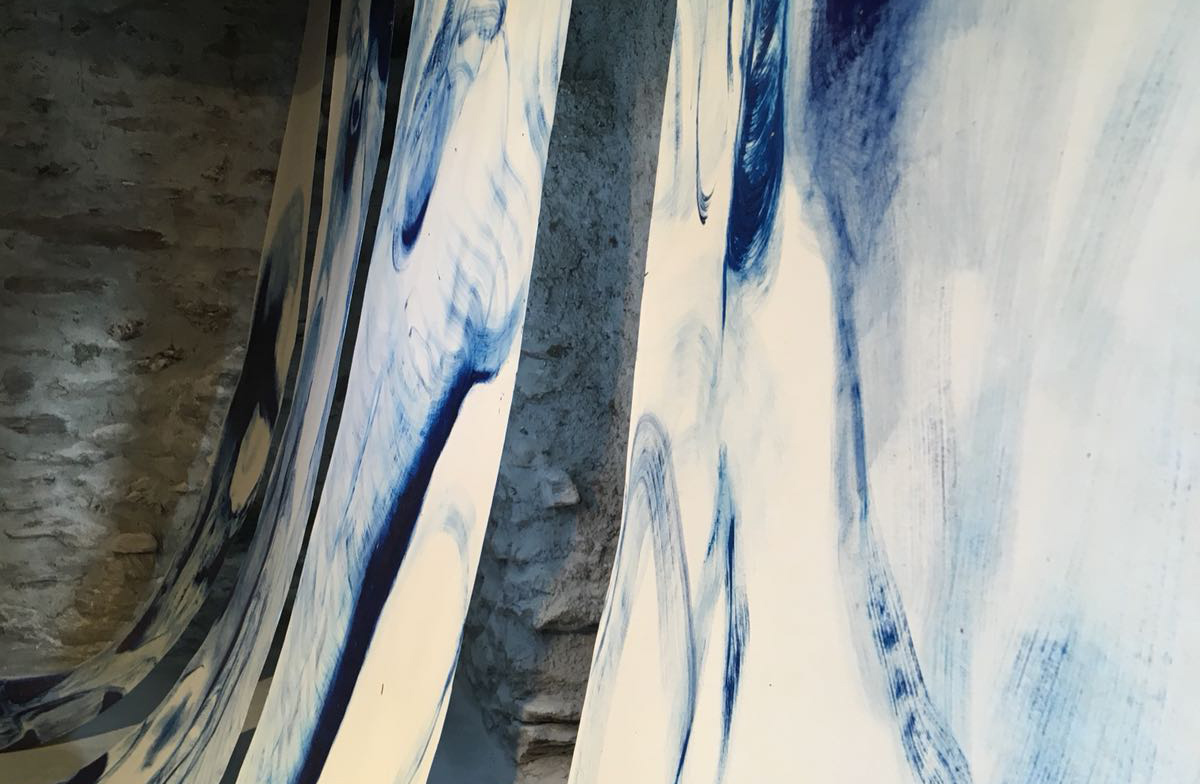
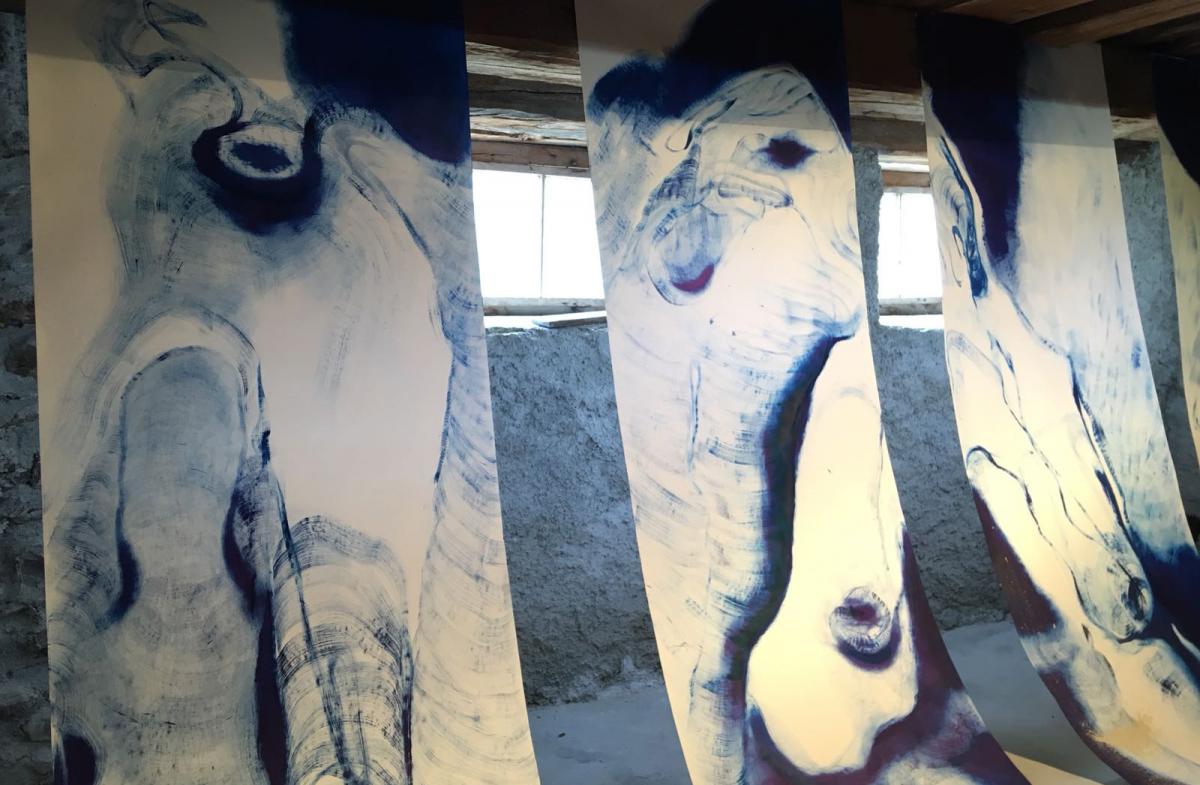
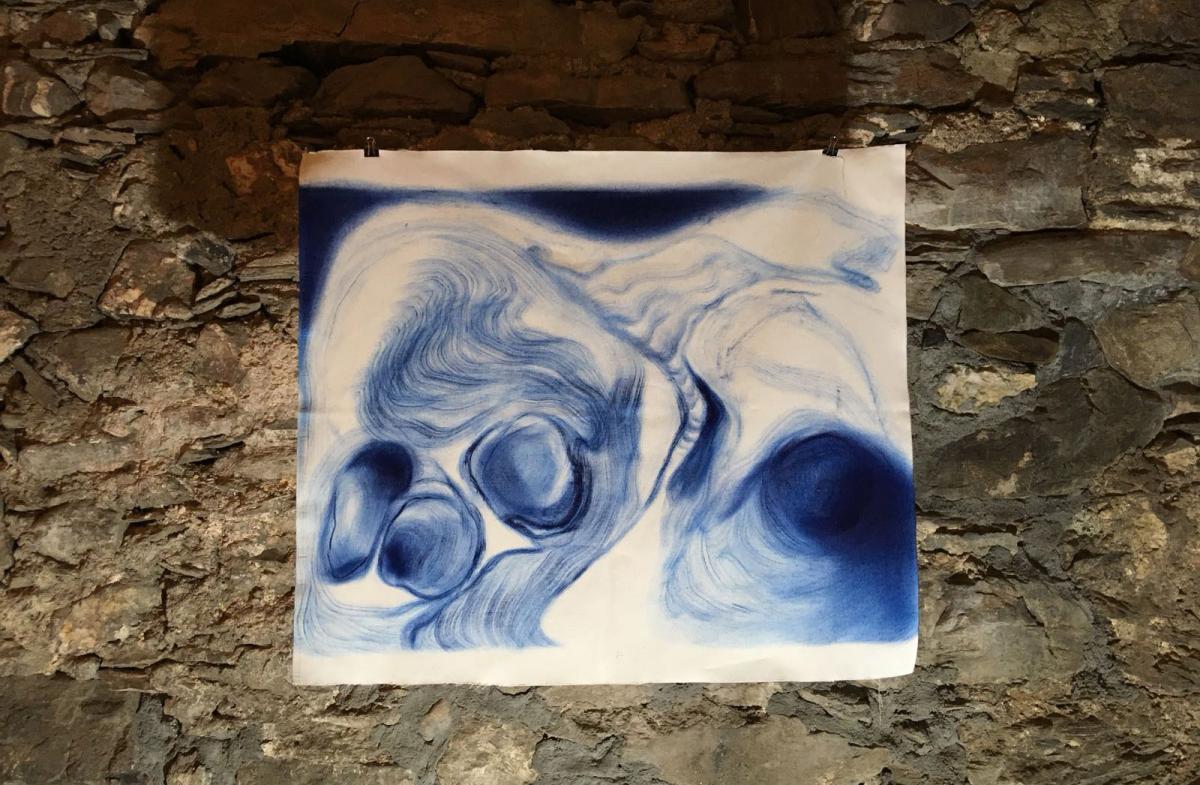
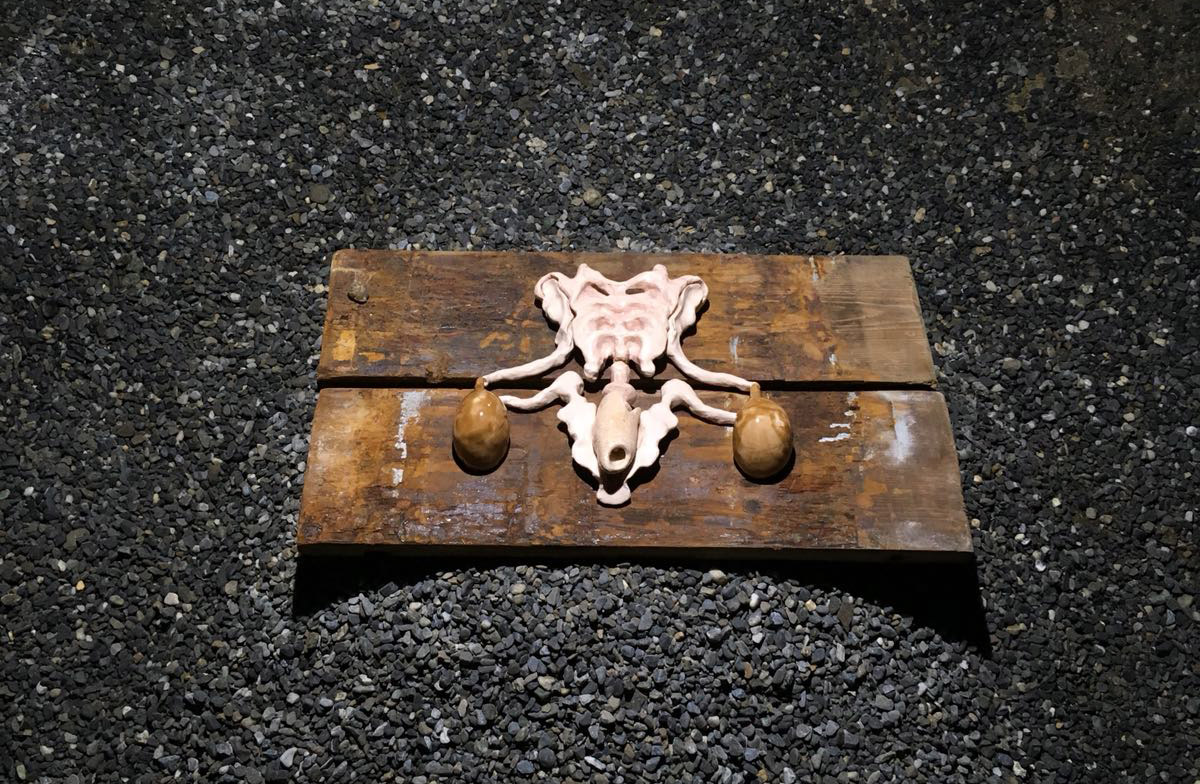
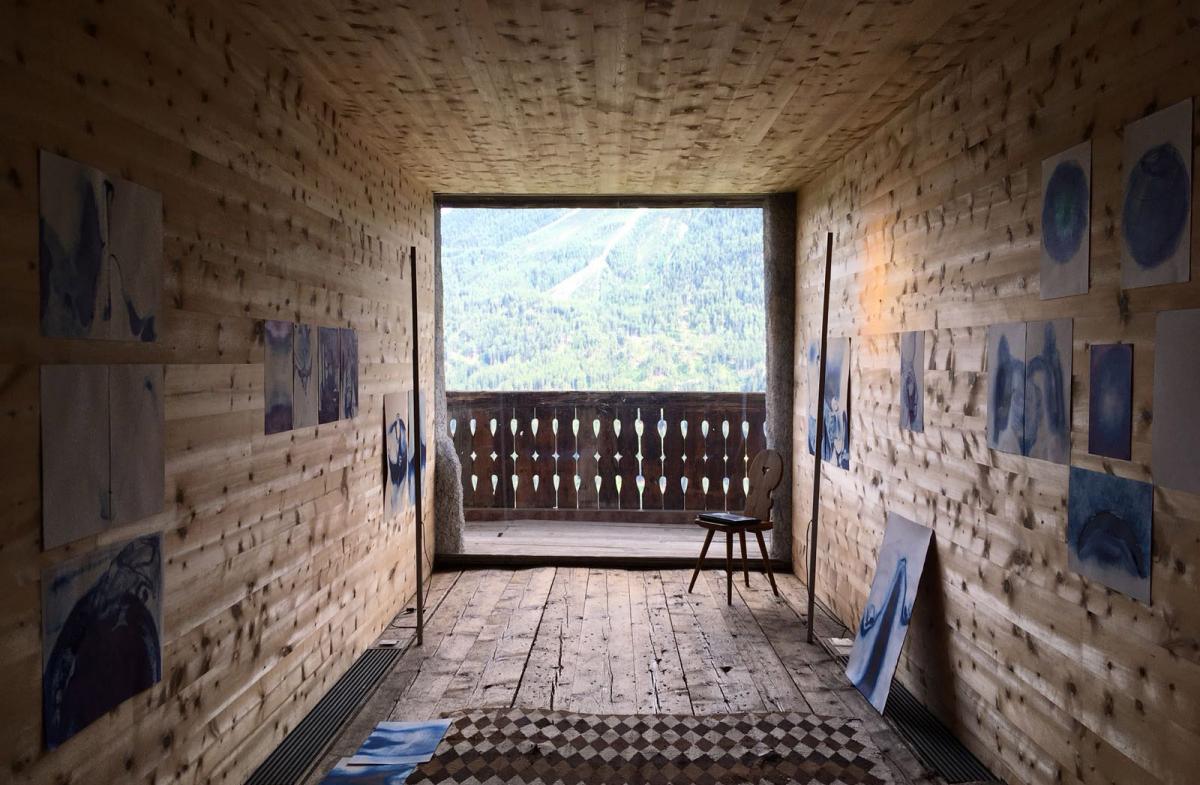
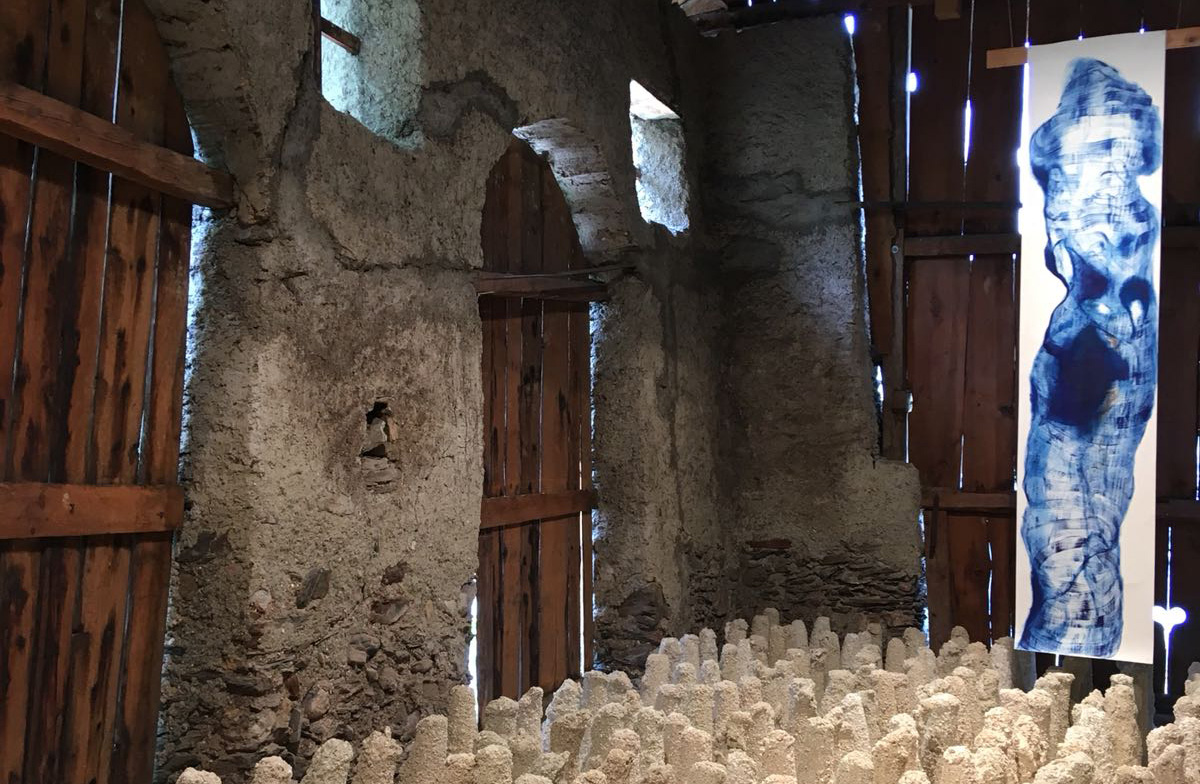
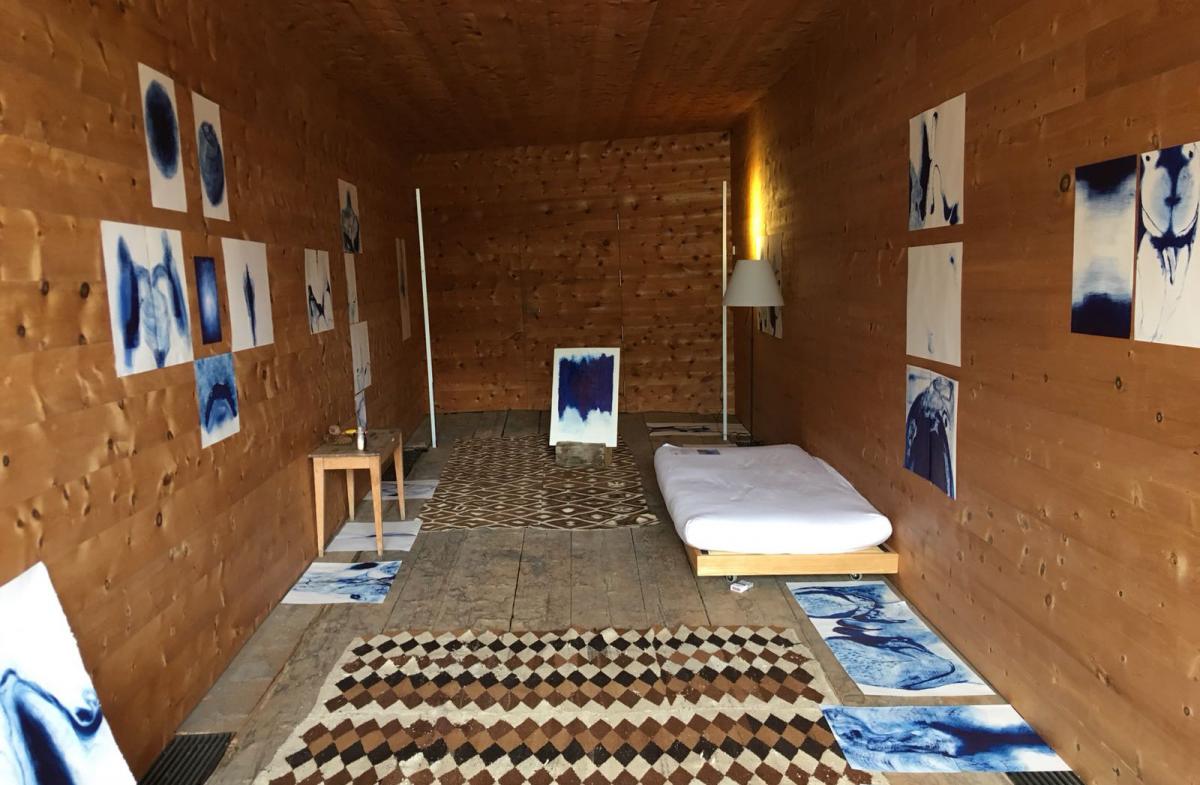
Sandra Salazar
T
Sandra Salazar
T
Inauguración: viernes 27 julio, 3pm
Proyecto AMIL
Tschlin, Suiza
Para tener acceso a la exhibición, por favor acudir al Restaurante Macún en Bügliet 49, Tschlin.
Proyecto AMIL se complace en anunciar T, exposición individual de la artista peruana Sandra Salazar que coincide con su residencia en la sede de Proyecto AMIL en Tschlin, Suiza. La muestra está compuesta principalmente por dos conjuntos de obra: el proyecto escultórico Genitales producido en Lima entre 2016 y 2017, y Urano y Territorio de desplazamiento creados este año durante la residencia.
Con esta exposición en Suiza, Salazar expande el proyecto Paisaje masculino que desarrolló como parte del laboratorio colaborativo de arte contemporáneo Haciendo Contexto II organizado por Proyecto AMIL en febrero de 2018. Su obra es una exploración del cuerpo transgénero y de las posibilidades de modificación sintética a partir del consumo de la testosterona. Salazar descompone los signos normativos de la diferencia sexual, haciendo coexistir lo masculino y lo femenino en un ejercicio que busca autoabastecerse de imágenes propias de reconocimiento e identificación afectiva. El título T remite al uso de la testosterona pero también a las posibilidades de transición asociadas a la tecnología.
El investigador y curador Miguel A. López describe de esta forma las obras de Salazar exhibidas en Tschlin:
Urano irradiando la montaña
Desde 2016, Sandra Salazar ha producido un extenso repertorio de cuerpos a través de diferentes medios como dibujos, pinturas de gran formato, cerámicas e instalaciones. Sus obras son el registro de sensaciones e imágenes personales que ella traslada delicadamente al papel o al barro. En estas obras, la artista parece querer desensamblar la carne, los huesos, los órganos y sus aparatos (reproductor, respiratorio, locomotor, excretor), las hormonas y su metabolismo, los fluidos, las fibras nerviosas y su intricado aparato de comunicación eléctrica y química. El resultado es una serie de paisajes y objetos que deshacen las marcas de la diferencia sexual, haciendo colisionar los sistemas de signos que organizan el régimen normativo de lo masculino y lo femenino.
Pero si creemos ver en sus imágenes un mero juego de formas en torno a la figura humana es necesario mirar de nuevo. Salazar no nos ofrece un atlas de anatomía o una representación de un cuerpo sumiso y listo para su inspección clínica o psiquiátrica. Por el contrario: su obra se revuelve en aquello que no puede ser absorbido por la mirada del discurso médico, que cuestiona los marcos legales y jurídicos que buscan definir qué cuerpos son aptos para el espacio público y la intimidad. Las geografías pictóricas y táctiles –cuerpo y espacio– que Salazar ensaya son preguntas sobre la relación entre visibilidad y autonomía, entre epistemología visual y las luchas por la autodeterminación, entre los dispositivos que nos construyen como cuerpos sexuales y la oportunidad de crear símbolos de reconocimiento afectivo e identificación propia.
El suyo es un ejercicio que en alguna medida puede estar emparentado con el trabajo de otros artistas y activistas que han operado a manera de geógrafos críticos de la producción de la sexualidad como Carol Rama, Eva Hesse, Phia Ménard, Annie Sprinkle, Bob Flanagan, Renate Lorenz y Pauline Boudry, Lorenza Böttner o Sergio Zevallos. Salazar observa cómo la iconografía de la anatomía sexual –inyectada en las clases de biología y verificada en la ritualidad de la atención médica– no es meramente descriptiva sino performativa y artefactual: produce las subjetividades de los cuerpos, impacta en nosotros como si se tratara de un planeta siendo golpeado por el cometa de las identidades. Pero toda colisión deja fragmentos y fisuras desde donde entorpecer o revertir los procesos convencionales de identificación social. Salazar trabaja meticulosamente con esos materiales: corta y encaja extremidades, orificios, conductos, líquidos y órganos que invocan otra genealogía visual de lo humano y sus posibilidades.
El título de la exposición, T, sugiere un vocabulario de proliferación y desplazamiento: transición, territorio, tecnología, tiempo, transacción, testosterona. Sus esfuerzos por representar confrontan cómo la experiencia de vivir como cuerpo transgénero está atravesada por las lógicas aceleradas del capitalismo y la arquitectura institucional de disciplinamiento identitario (el colegio, el hospital, el servicio militar, la iglesia, el juzgado, la familia, el documento de identidad, el baño público, entre otros), todo ello agravado en un país como el Perú marcado por la herencia viva de la historia colonial. En ese contexto, para Salazar, el acto de crear surge como una oportunidad para reprogramar su entorno y su subjetividad.
T está compuesta principalmente de dos conjuntos: el proyecto escultórico Genitales (2016-2017) producido en Lima y Urano (2018) y Territorio de desplazamiento (2018) creados como parte de la residencia en Tschlin. Genital es consiste en una serie de cerámicas que invierten las funciones y apariencias de los órganos reproductores. Salazar parece proponer nuevas y mejores variantes para el desarrollo anatómico y el funcionamiento del cuerpo. La genitalidad no binaria de sus esculturas se bifurca con representaciones de estructuras óseas y del sistema endocrino, componiendo combinaciones para las cuales no existe todavía nombre: óvulos abiertos, penes duplicados, ovarios que devienen testículos, un glande con una abertura en forma de vulva.
Esta morfología genital alternativa nos invita a pensar la sintaxis visual del género y el universo de variantes que se abren desde la experiencia del cuerpo trans. Por un lado, Salazar explora el impacto de las hormonas en los cuerpos y cómo su control por parte de la industria médica y farmacéutica ha sido –y sigue siendo– una de las formas más sofisticadas de regulación del cuerpo social e imposición de normas sobre los modos de vivir la sexualidad. Y por otro, la artista elabora sobre las incertidumbres de atravesar quirúrgicamente la transición y los procesos de intervención asociados a ella: la histerectomía (extirpación del útero), la faloplastia (reconstrucción de pene y testículos), entre otras. Sus obras, sin embargo, funcionan como un espacio de reconciliación. La delicadeza de las esculturas, las huellas de su maleabilidad y la belleza de su acabado parecen procurar reparar la violencia con que la experiencia de identidad sexual ha sido implantada en nuestras vidas.
Sus dos obras recientes, Urano y Territorio de desplazamiento, toman distancia de la representación más explícita del cuerpo. Urano es un dibujo abstracto en color cian, cuya forma circular e intensidad cromática insinúa un repertorio de posibilidades semánticas: un tejido abierto, un umbral, un orificio, una explosión, el tiempo sideral, una célula, un planeta, un conducto. La artista transfigura el cuerpo en un espectro totalmente desembarazado de características anatómicas, hormonales o genéticas, lo representa como energía en expansión cuyo movimiento es imposible de seguir y mensurar.
Territorio de desplazamiento es otra forma de paisaje hecho de largas tiras de papel, dividas y colocadas del techo al suelo. Esta obra, irradiada simbólicamente por los destellos de Urano, funciona como un sismógrafo de sensaciones de un cuerpo convertido en un fluido orgánico de pigmento azul que se extiende a través del papel por el espacio. La escala de la instalación parece jugar con las dimensiones heroicas del cuerpo masculino, pero extrayendo de la monumentalidad sus marcas de autoridad: el cuerpo de esta instalación no tiene centro ni jerarquías e invita a imaginar otra economía del deseo.
La última de las obras es una proyección de la montaña Piz Lad –ubicada en frente de la casa de residencia en Tschlin– acompañando la instalación de dibujos. La imagen aparece como una analogía entre el exterior y lo interior, entre la geografía corporal y la topografía botánica. Para la artista se trata de una equivalencia sobre la presencia: al igual que Piz Lad aparece duplicado, los dibujos y el cuerpo ofrecen una experiencia reversible y complementaria de uno mismo. Su obra es claramente una respuesta a su tiempo presente, a una contemporaneidad en donde la T viene abriendo nuevas formas de elección y realización, sea en los espacios legales o en la clandestinidad.
Miguel A. López
San José, julio de 2018
Acerca del artista
Sandra Salazar (1989) cursa el cuarto año de la carrera de pintura en la Escuela Nacional Superior Autónoma de Bellas Artes del Perú. Investiga temas de género desde los inicios de su carrera y su enfoque actual es la deconstrucción de la feminidad y la construcción de la masculinidad, a partir del uso en su contexto de artefactos tecnológicos y el consumo de la testosterona.
Proyecto AMIL
Bügliet 49
Tschlin, Switzerland
